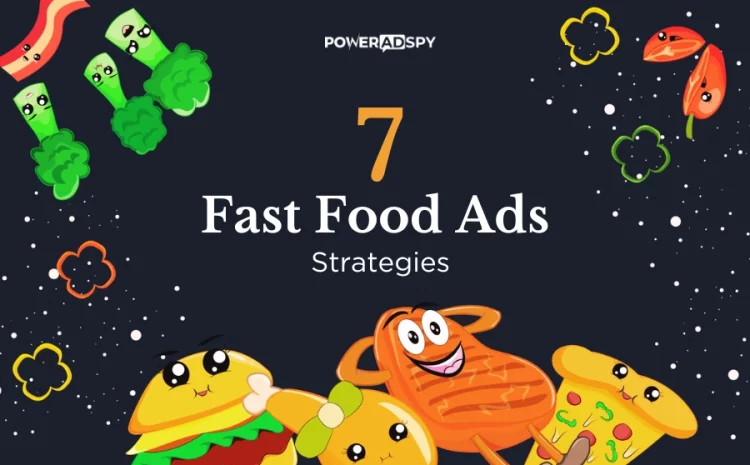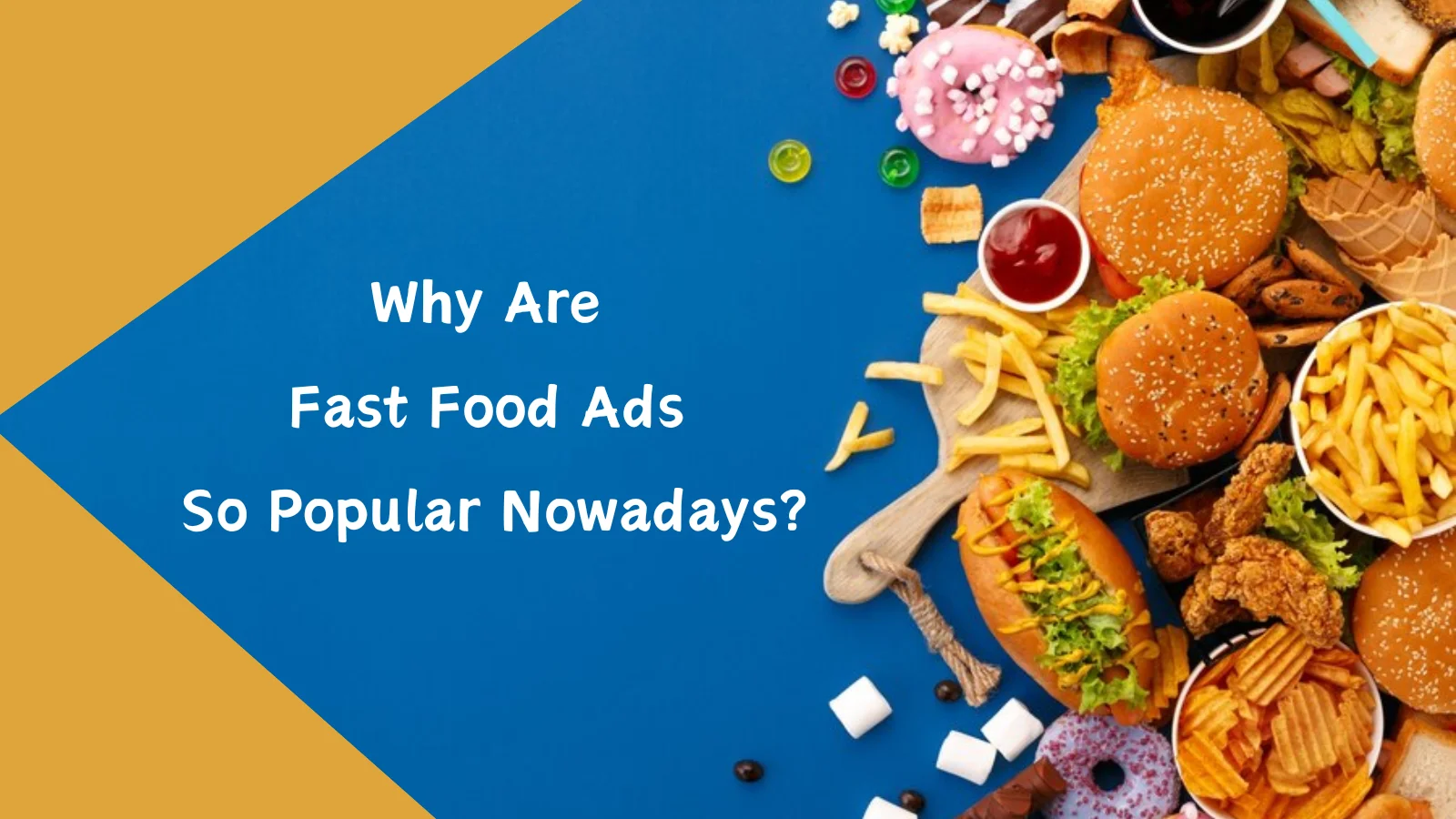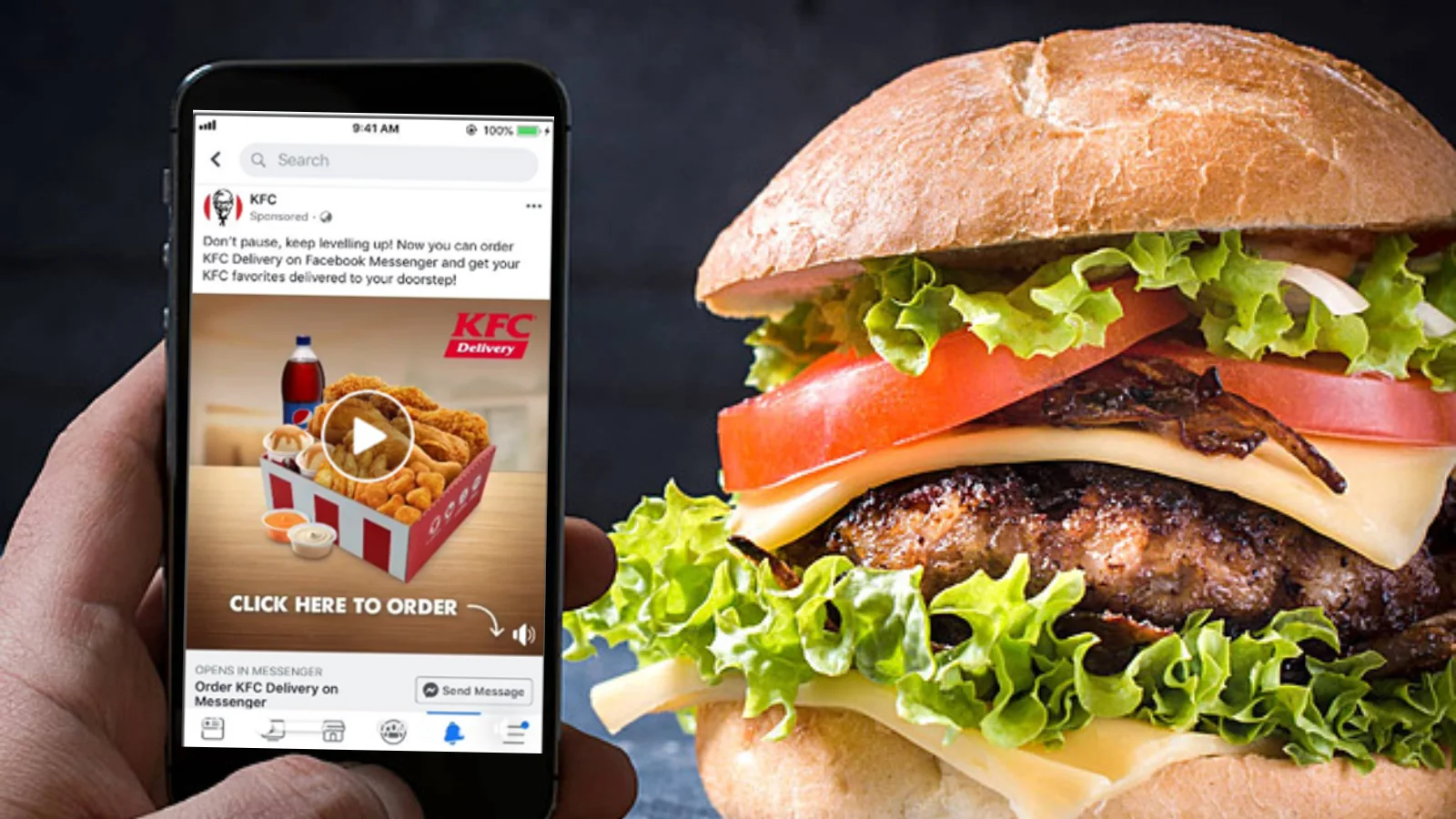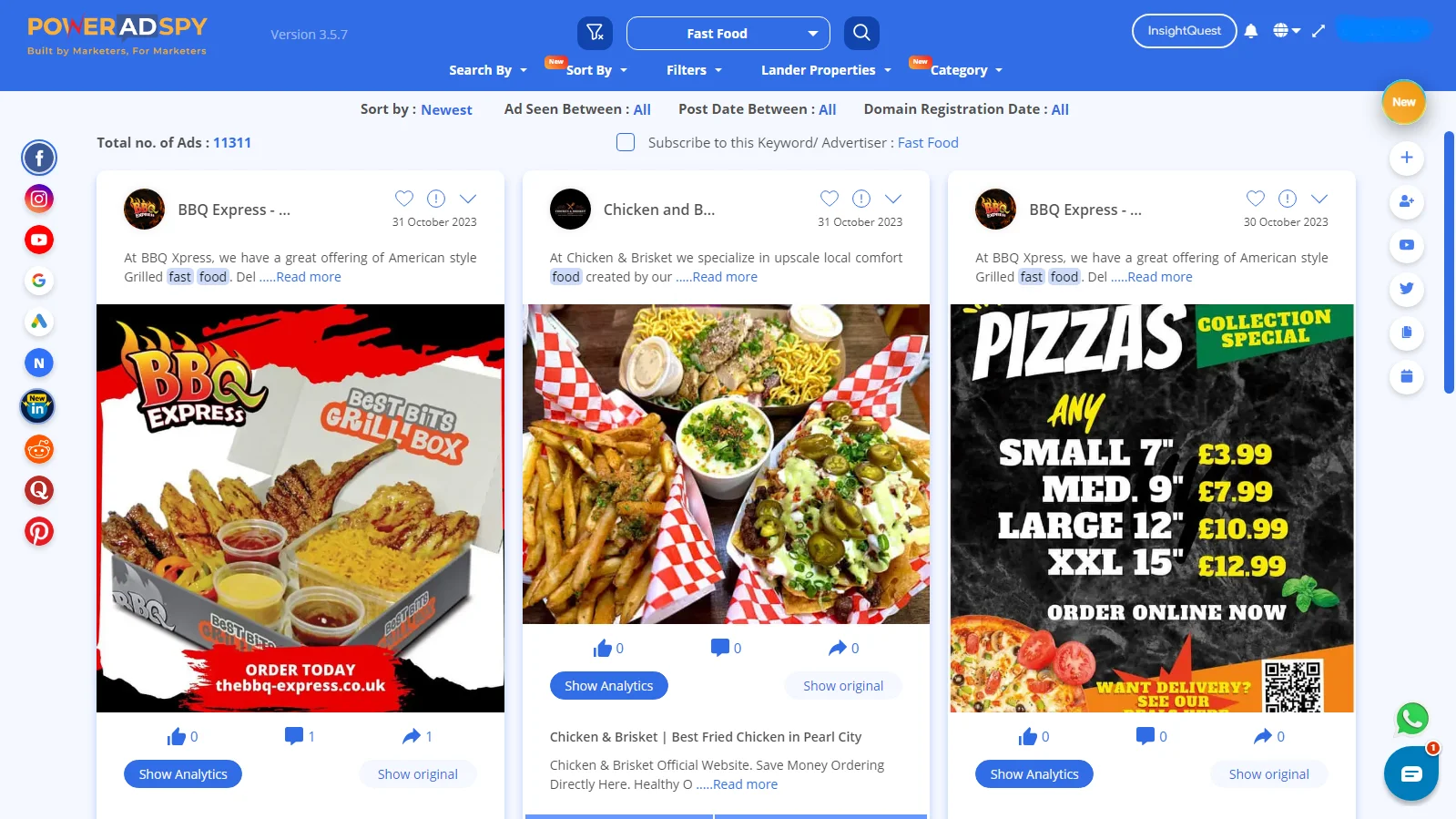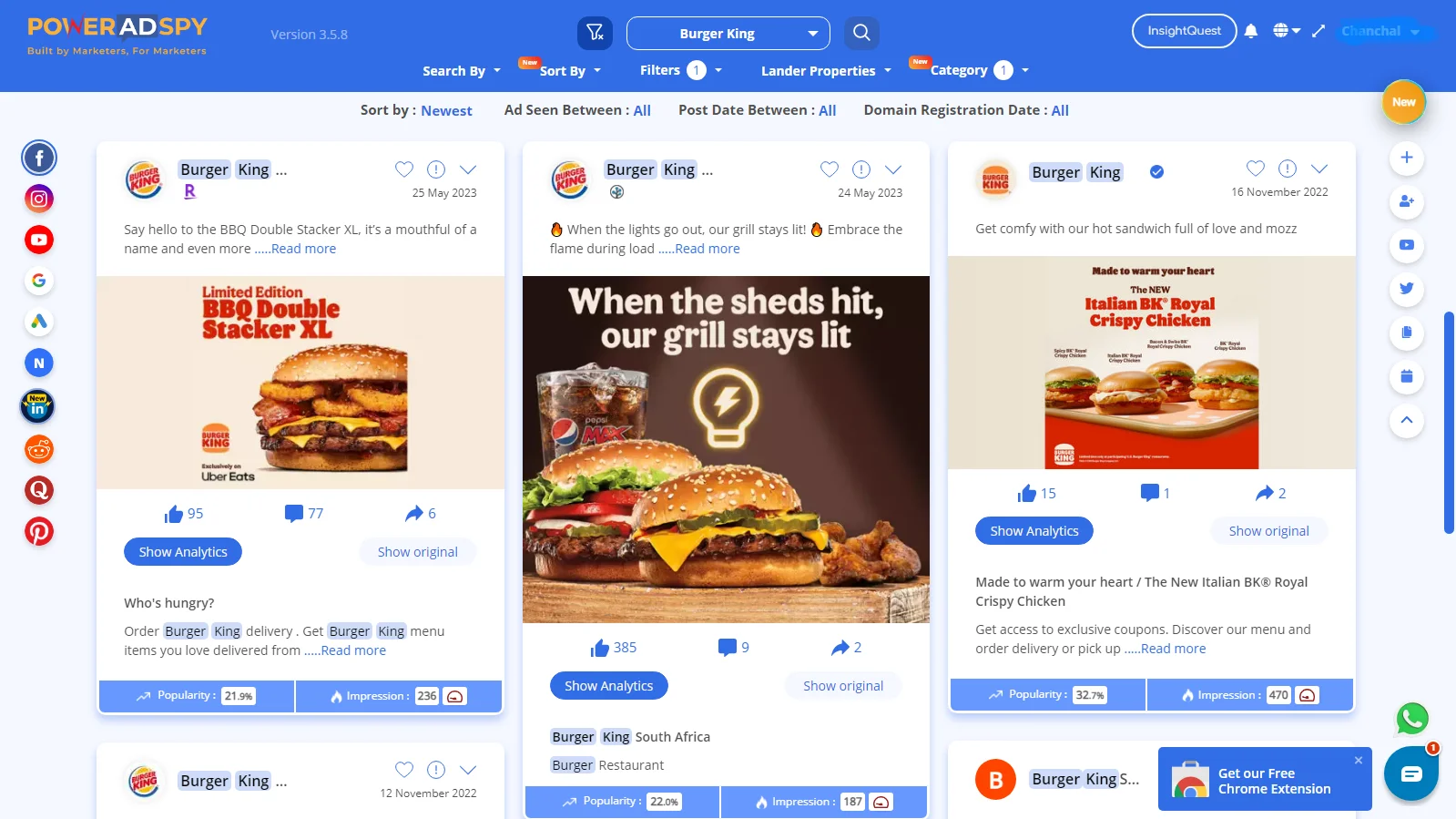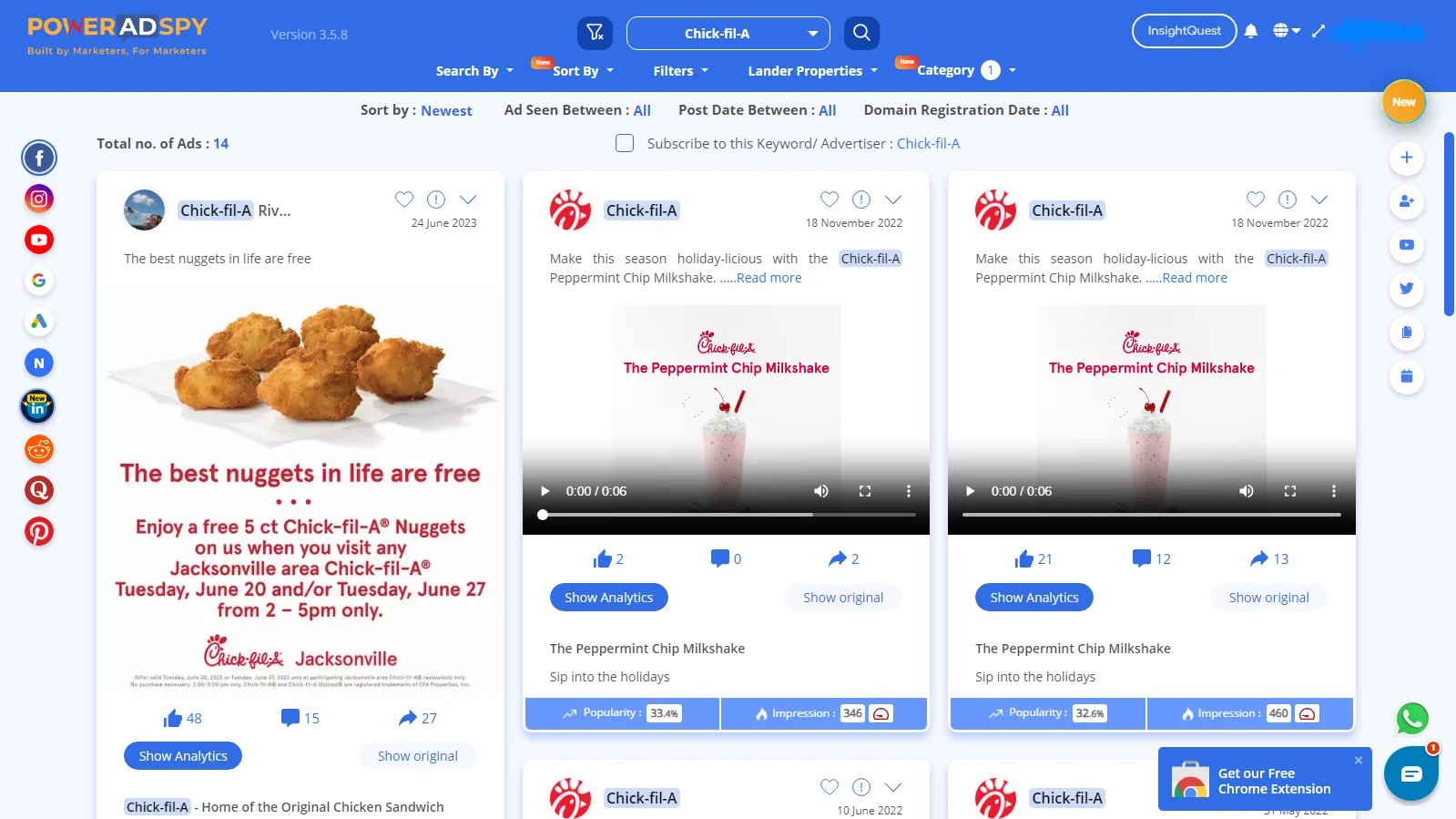7 Best Strategies Behind Every Successful Fast Food Ads
Have you ever been caught up in a hypnotic state while watching a fast food advertisement on television or on your mobile device? Well, you’re not alone!
But now, it’s time to address one of the most prominent pain points for fast food marketers. As you know this industry is fiercely competitive, with giants battling for consumer attention. Breaking through the noise and making your brand stand out is a constant struggle.
In this blog, we are going to unwrap the popularity and some secrets about fast food ads which you can also use in the creation of your ads,
So, Let’s Go!!
Listen To The Blog Now!!
Why Are Fast Food Ads So Popular Nowadays?
Fast food ads have become a staple in our daily lives. The reasons for their popularity are multi-faceted:
Convenience:
Fast food ads tap into the modern consumer’s desire for convenience. They promise a quick and hassle-free meal, which is particularly appealing in today’s fast-paced world.
Visual Appeal:
These advertisements are a visual feast. The delectable images of burgers, fries, and pizzas can make your mouth water. This visual appeal plays a significant role in attracting customers.
Affordability:
Many fast food chains offer affordable options. Their ads often highlight value meals and deals, making them budget-friendly for a wide range of consumers.
Effective Branding:
Successful advertisements for fast food have cultivated strong brand recognition. The logos and mascots of popular chains are instantly recognizable, creating a sense of familiarity and trust.
Social Media Presence:
Fast food chains have embraced social media, making them accessible to a broad audience. They employ various e-commerce advertising strategies, including engaging content, viral campaigns, and partnerships with influencers.
Now that we’ve explored why fast food ads are popular, let’s dive into the strategies that make them effective.
7 Strategies That Make Fast Food Ads Effective
Flavorful Visuals
The power of a fast food advertisement is undeniable. These advertisements rely heavily on captivating visuals to draw the audience in. They use high-quality photos and videos to show the products in the best possible light.
The visuals in food ads emphasize several key aspects that make them irresistible:
Freshness:
Fast food ads highlight the freshness of their products. Crisp lettuce, juicy tomatoes, and perfectly grilled patties are featured prominently, creating an image of mouthwatering freshness.
Textures:
With visuals, you can see the texture of the food. Whether it’s the crispy golden fries, the soft and fluffy burger buns, or the gooey cheese, these textures are visually appealing and make the audience crave these treats.
Vibrant Colors:
Fast food items are known for their vibrant and appealing colors. From the rich reds of ketchup to the golden brown of fried chicken, these colors are eye-catching and stimulate the appetite.
Engage With Various Campaigns
In the digital age, fast food chains recognize the importance of establishing a strong online presence. Social media platforms like Facebook, Instagram, and Twitter serve as valuable tools for connecting with their audience.
They consistently post engaging content that not only keeps customers informed but also entertained. To maintain the success of their social media campaigns businesses often turn to tools like PowerAdSpy, an intelligence tool that provides insights into ad campaigns across various platforms.
PowerAdSpy| The Best Ads Spy Tool
PowerAdSpy is an AI-based ads intelligence tool to help marketers and businesses get insights into their competitors’ advertising strategies across various online advertising platforms. This tool has ads inventory of more than 110+ million ads from more than 100+ countries.
Here are some key features of PowerAdSpy you should know:
Multi-Platform Coverage:
PowerAdSpy covers a wide range of advertising platforms, including social media (e.g., Facebook, Instagram), search engines (e.g., Google, Bing), display networks, and more. This extensive coverage ensures that users can monitor ads across various channels.
Ad Creatives Access:
This tool also gives you a sneak peek at the creative behind the competitor’s fast food ads they are running. It Includes images, videos, headlines, ad copies, and calls to action. This feature is crucial for understanding what resonates with the target audience.
Ad Performance Metrics:
Users can access performance data for ads, such as click-through rates (CTR), engagement rates, ad reach, and conversion rates. Understanding the performance of different ad campaigns is essential for refining one’s advertising strategy.
Keyword and Targeting Insights:
The tool helps users identify the keywords and targeting options used in successful ad campaigns. This information is vital for optimizing ad placements and reaching the right audience effectively.
Ad Position Tracking:
Users can track the position of ads within search results or on web pages. This data is valuable for understanding where competitors’ ads appear and how often they secure prime ad placements.
Ad Filtering and Sorting:
Advanced filtering and sorting options enable users to narrow down their research. They can filter ads based on various criteria, such as ad type, date range, and ad strength.
Emotional Tug
Beyond just showcasing the food, some fast food ads aim to create an emotional connection with the audience. They tell stories that resonate with people’s feelings, memories, and experiences. These ads often focus on relationships, celebrations and nostalgia to tug at the heartstrings.
For example, an ad might depict a family enjoying a meal together, evoking feelings of togetherness and happiness. Another might revolve around a nostalgic look back at how a particular fast food chain has been a part of people’s lives for generations. These emotional narratives help forge a deep and lasting connection between the brand and its customers.
Unforgettable Jingles & Catchphrases
Memorable jingles and catchphrases are a hallmark of successful fast food ads. These catchy tunes are a great way to get your brand out there and grab people’s attention right away.
For example, when you hear “I’m lovin’ it,” you instantly associate it with McDonald’s, or “Have it your way” with Burger King.
These jingles and catchphrases serve as powerful branding tools. They not only reinforce the brand’s identity but also make it easier for customers to recall and identify the chain in a crowded marketplace.
Limited-Time Offers and Deals
Scarcity and urgency are potent motivators in the world of marketing. Many advertisements for fast food include limited-time offers and deals to encourage immediate action. Phrases like “limited time only” or “today’s special” create a sense of urgency and entice customers to visit the restaurant sooner rather than later.
These time-limited promotions tap into the fear of missing out (FOMO), making customers feel they must act quickly to enjoy a special deal. This strategy can be particularly effective in driving foot traffic and increasing sales.
Strong Storytelling
Storytelling is a compelling technique employed in fast food advertising. Chains like Chick-fil-A have used this strategy to connect with their audience. They share stories about their founder, the values they hold, and their involvement in the community.
Through storytelling, they make their brand more relatable and endearing. By sharing these narratives, fast food chains give their customers a deeper understanding of the brand’s history and principles. This emotional connection can foster loyalty and trust, as customers feel they are supporting a business that aligns with their values.
Attract With Humor and Entertainment
Many fast food ads incorporate humor and entertainment into their marketing campaigns. The goal is to make the audience laugh or smile, creating a positive association with the brand. These ads are often made to go viral, generating organic buzz on social media platforms.
Humorous food advertisements often rely on clever wordplay, funny scenarios, or unexpected twists that catch viewers off guard and leave a memorable impression. The ability to make people laugh or entertain them while promoting the product is a powerful tool in the marketer’s arsenal.
Read More:
Food Advertisements: Stepping Towards The New Normal
Know What Goes Behind a Successful Ad Campaign?
13 eCommerce Ads Examples To Create Better Ad Campaigns
What are the Ethical Considerations In Fast Food Ads?
Ethical considerations in fast food advertising have become increasingly important in recent years as consumers, health organizations, and regulatory bodies have raised concerns about the impact of such ads on individuals’ health, dietary choices, and the environment.
Here are some of the ethical considerations in fast food ads:
Promoting Unhealthy Eating:
These food ads frequently entice consumers to choose high-calorie, nutritionally poor options, contributing to health problems like obesity, diabetes, and heart disease. These promotions can be viewed as unethical, as they prioritize profit over public health and well-being.
Targeting Children:
Children are often the primary audience for fast food advertising. With colourful characters and toys, these ads can shape unhealthy eating habits from a young age. This has sparked ethical concerns regarding the exploitation of young, impressionable consumers and the long-term health consequences of such marketing tactics.
Oversized Portions:
Fast food ads often depict very large portions, normalizing excessive consumption. This portrayal encourages overeating, leading to weight gain and health problems. It’s an ethical issue, as these ads contribute to overconsumption and its associated health risks.
Environmental Impact:
The environmental impact of the fast food industry, including excessive packaging waste and carbon emissions, is rarely addressed in advertising. This lack of transparency raises ethical concerns as it reflects a disregard for sustainability and environmental responsibility.
Transparency Issues:
Misleading visuals and descriptions in fast food advertising can erode trust between consumers and brands. When ads fail to accurately represent the actual product, this impacts ethical responsibility.
These problems can hurt your brand’s reputation and make people less likely to trust you, so it’s important to think about them when you’re designing your ads.
Fast food chains are gradually addressing these concerns through healthier menu options, ingredient transparency, and responsible marketing practices. Balancing profitability with ethical responsibility remains an ongoing challenge.
Some Food Advertisement Examples
Let’s take a closer look at some food advertisement examples that showcase these strategies:
Burger King’s “Have it Your Way”:
Burger King’s slogan, “Have it your way,” emphasizes customization and choice, giving customers a sense of control over their meals.
Chick-fil-A’s Storytelling:
Chick-fil-A’s ads often feature heartwarming stories about their founder, Truett Cathy, and his commitment to quality and service. These stories create a personal connection with the brand.
Conclusion
The key to successful fast food ads lies in their ability to evoke our senses, emotions, and desires. By presenting mouthwatering visuals, triggering nostalgia, and emphasizing convenience, these advertisements tap into our primal cravings.
However, the real secret sauce is the skilful combination of these elements with an in-depth understanding of the target audience and the latest marketing trends.
To remain ahead in the competition, Instagram, LinkedIn and Facebook ad spy tools like PowerAdSpy are priceless. It can help advertisers dissect rivals’ strategies, show insights into their ad campaigns, and deliver data on thriving ads. This tool empowers advertisers to stay ahead in their fast food ad campaigns.

